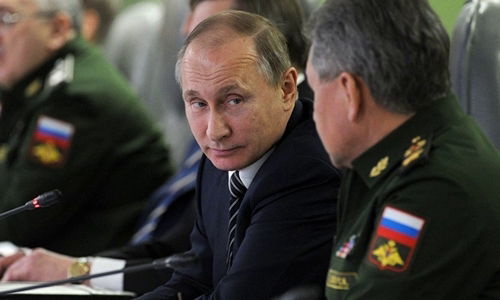Putin said that Russia had passed the "peak of modernization," allowing the government to spend less but maintaining the same level of defense.
"Cutting back on defense spending does not mean we give up, but because we have already surpassed the peak of our nation's security initiatives and innovated military technology," Russian President Vladimir Putin spoke at a meeting with Defense Ministry officials in Moscow on November 11.

Russian President Putin (left) talks with Defense Minister Sergei Shoigu during a meeting at the ministry headquarters on 11/11 Photo: Sputnik
Putin noted that the Russian defense industry needs to continue its efforts to create competitive and high-tech equipment, avoiding the low-tech production of civilian appliances, as in the 1990s. The Russian government prepares a clear and easy-to-understand plan to improve various aspects of the economy, science and human development.
Russia has been one of the few military powers to cut defense spending in recent years. According to the latest figures, Russia is no longer in the list of the top 5 spending countries for the military.
Putin last month said Russia would not be dragged into an arms race with the US. According to him, Russia only spent $ 48 billion on defense and ranked seventh in the world after the United States, China, Saudi Arabia, Britain, France and Japan, but Moscow still has unmatched military capabilities thanks to concentration. priority field research.
"The arms race is bad and not good for the world. We will not be dragged into exorbitant budget spending games," Putin said.
The Stockholm International Peace Research Institute estimates the North Atlantic Treaty Organization (NATO) spent more than $ 1,000 billion in military spending in 2018. The seven NATO member countries are among the top 15 countries in terms of total defense budget.
U.S. President Donald Trump's administration has urged NATO member states to increase defense spending to 2% of GDP, and US lawmakers also approved an increase in defense spending this year to US $ 686 billion compared to US $ 667.6 billion. 2018. The United States also continues a $ 1,000 billion program to upgrade U.S. nuclear forces for 30 years and oversee NATO deployment and drills along the border with Russia.



 BethDavis
BethDavis







